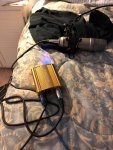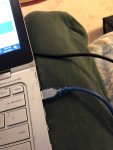christinag
New member
Hi! I'm trying to set up my Rode NT1A to record with audacity.
PHANTOM POWER 48V ---> plugged into LAPTOP through usb port
PHANTOM POWER 48V ----> plugged into Rode NT1A mic through XLR cable
I've already closed and reopened audacity. Do I need an audio interface like the Focusrite Scarlett 2i2 to get my mic to work?
Thank you for any advice.



PHANTOM POWER 48V ---> plugged into LAPTOP through usb port
PHANTOM POWER 48V ----> plugged into Rode NT1A mic through XLR cable
I've already closed and reopened audacity. Do I need an audio interface like the Focusrite Scarlett 2i2 to get my mic to work?
Thank you for any advice.




